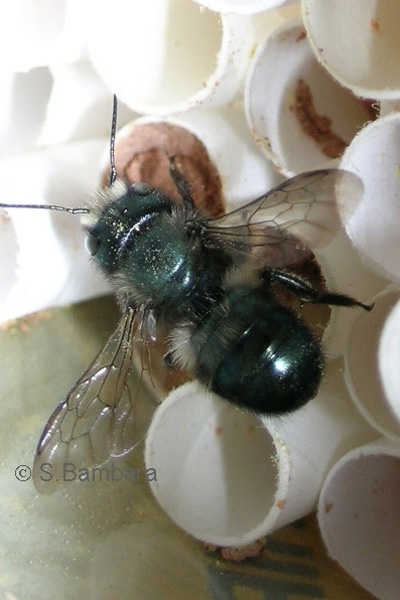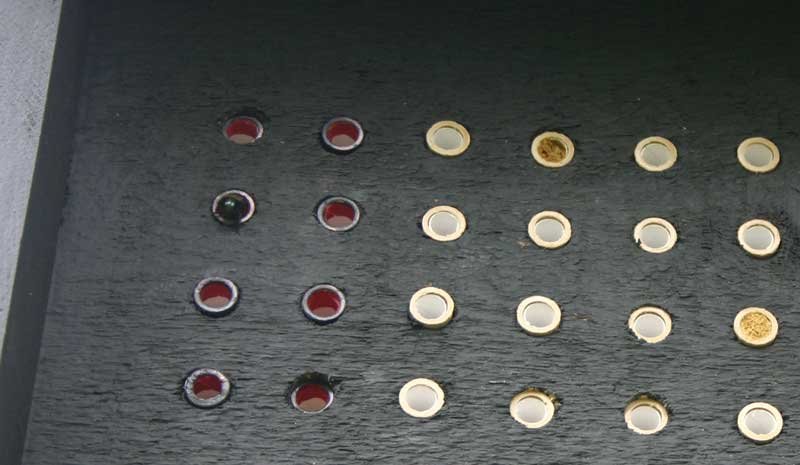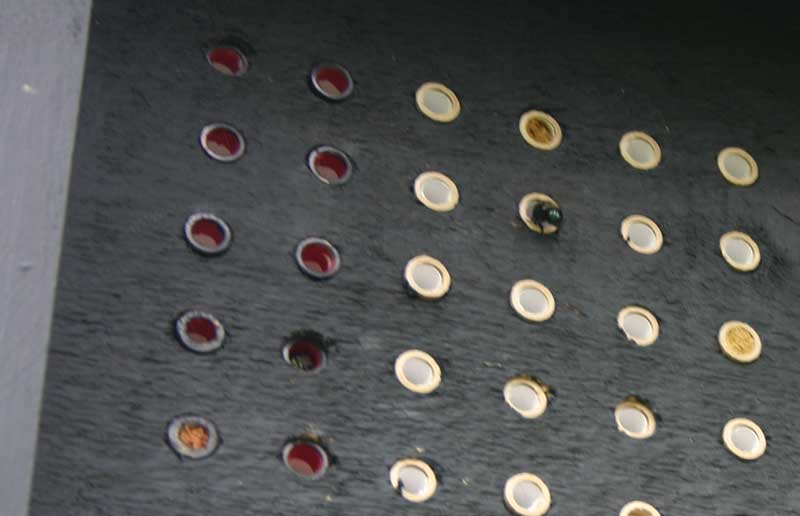Orchard Mason Bees
To find another way to spend my money, I became interested in bees that are used only for pollination. The Orchard Mason bee was my choice to try. For lots of info on these bees, go here: Link

This is what one looks like. And no, it's not a fly.

After reading about these bees until I thought I'd go blind, I made my purchase. Instead of gobs of bees like when I purchase honey bees, this is what I got for my $22 dollars. Actually, I only got three tubes with approximately eight bees in each tube.
Since they are pupating and arrived in November for the spring and since the winter was warm, they were popped into the vegetable crisper in the refrigerator until spring.
After studying all the different plans I constructed this nest box.


The nest consists of a cardboard tube which contains a white paper liner and a plastic end plug at the back. A document I read stated that the bees like dark tubes better than the white ones so I used both white and darkened tubes to see what my bees liked. I installed the tubes with the bee pupas I purchased along the bottom row of this box. Now I'm waiting for the bees to emerge.
The bees are finally out after a tense eight day wait. I guess I didn't kill them in the refrigerator. Here are photos of them. They are the most difficult things to photograph. They never stop long enough for me to do them justice. As you may notice, several of the tubes have been filled with eggs and sealed of with mud plugs.





By June the adults will be gone and only the pupating eggs in the tubes will remain.

Here is the box at the end of June. 41 of 77 tubes have been filled with eggs (about 8 per tube). My study on which color tubes they like proved inconclusive so I'll go with the white ones. They are easier.
I have been informed that this bunch won't be spending the summer in the fridge, so I'll put them under the house where its cool until next spring. That keeps the woodpeckers and parasites away from them.
The Third Year
The bees seem to like the first box so I built a second one.

As you can see, occupancy runs about 90%. the other box stays full too.